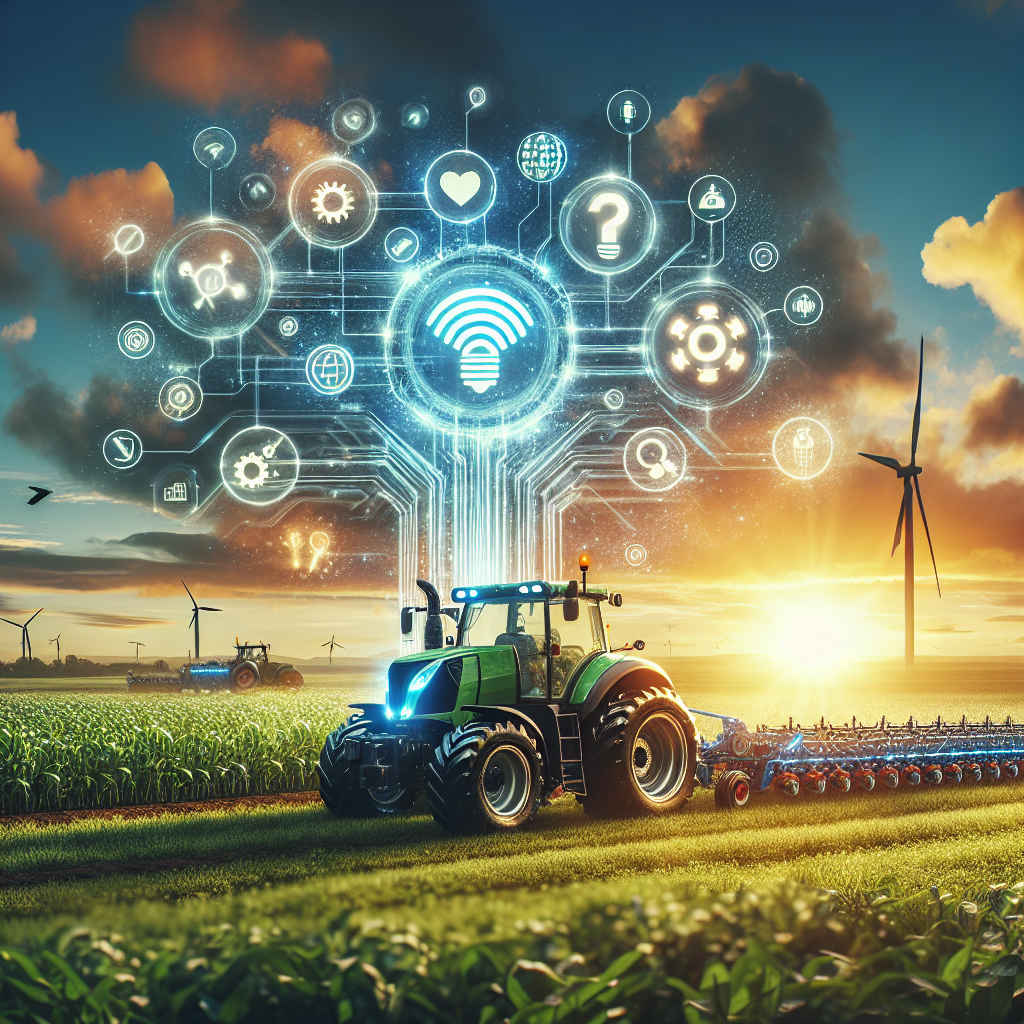Generative AI in Agriculture: Optimizing Crop Production
Artificial intelligence (AI) has been making significant strides in various industries, including agriculture. One of the most exciting developments in this field is the use of generative AI to optimize crop production. Generative AI, also known as generative adversarial networks (GANs), is a type of AI model that generates new data based on input data. In the context of agriculture, generative AI can help farmers make more informed decisions, improve crop yields, and reduce waste.
How Generative AI Can Help Agriculture
Generative AI can be used in agriculture in a variety of ways to improve crop production. One of the key applications of generative AI is in predicting crop yields. By analyzing historical data on weather patterns, soil conditions, and crop performance, generative AI can generate forecasts that help farmers make informed decisions about planting, irrigation, and harvesting. This can lead to higher yields and better quality crops.
Generative AI can also be used to optimize the use of resources such as water, fertilizer, and pesticides. By analyzing data on soil moisture levels, nutrient content, and pest infestations, generative AI can generate recommendations for the optimal use of these resources. This can help farmers reduce waste, lower costs, and minimize environmental impact.
Another application of generative AI in agriculture is in crop breeding. By analyzing genetic data on different crop varieties, generative AI can generate new genetic combinations that have desirable traits such as disease resistance, drought tolerance, and high yield. This can help breeders develop new crop varieties that are better suited to changing environmental conditions and market demands.
Generative AI can also be used to monitor crop health and detect diseases early. By analyzing images of crops taken by drones or satellites, generative AI can identify patterns that indicate the presence of pests, diseases, or nutrient deficiencies. This can help farmers take timely action to prevent crop losses and maintain the health of their crops.
Overall, generative AI has the potential to revolutionize agriculture by providing farmers with valuable insights and recommendations that can help them optimize crop production, reduce waste, and increase profitability.
FAQs
Q: How does generative AI differ from other types of AI in agriculture?
A: Generative AI is unique in that it can generate new data based on existing data. This makes it especially useful for tasks such as predicting crop yields, optimizing resource use, and breeding new crop varieties.
Q: How can farmers access generative AI tools for agriculture?
A: There are several companies that offer generative AI tools specifically designed for agriculture. These tools can be accessed through online platforms or integrated into existing farm management systems.
Q: Is generative AI expensive to implement in agriculture?
A: The cost of implementing generative AI in agriculture can vary depending on the size of the farm, the complexity of the tasks being performed, and the specific tools being used. However, many farmers find that the benefits of generative AI, such as increased yields and reduced waste, outweigh the initial cost of implementation.
Q: What are some challenges of using generative AI in agriculture?
A: One of the main challenges of using generative AI in agriculture is the need for high-quality data. Generative AI models rely on large amounts of data to generate accurate predictions and recommendations. Additionally, farmers may need to invest in training and support to effectively use generative AI tools.
In conclusion, generative AI has the potential to revolutionize agriculture by optimizing crop production, reducing waste, and increasing profitability. By harnessing the power of generative AI, farmers can make more informed decisions, improve crop yields, and ensure the sustainability of their operations. As this technology continues to evolve, we can expect to see even more innovative applications of generative AI in agriculture in the years to come.

